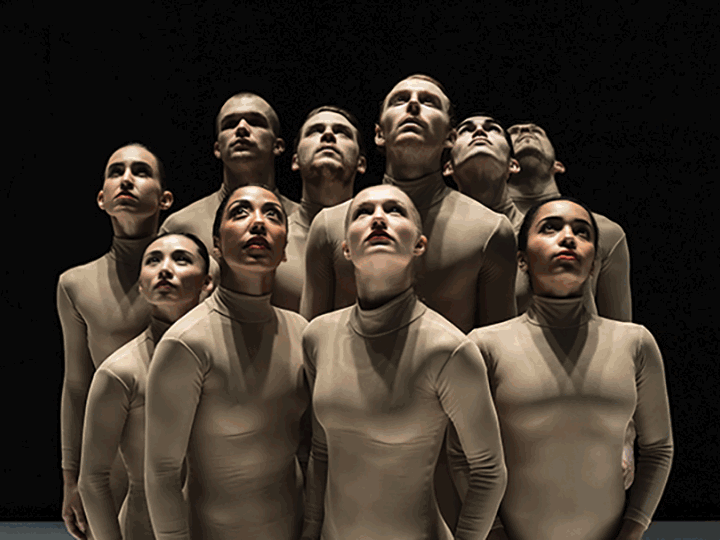He Helps Preserve Thailand’s Cultural Heritage : Music: For 20 years, an Englishman has been the guiding force behind Bangkok’s Classical Dance and Music Groups.
- Share via
“The main problem is food,” says Dacre F.A. Raikes of his foreign tours with the Classical Dance and Music Groups from Srinakharinwirot University in Bangkok. On a 1988 visit to the United States, he recalled, “the demon dancer was the dickens--he wouldn’t eat.”
Not until Raikes found “rice cooked the right way,” that is. As adviser and administrator to the troupe since 1971, Raikes pitches in on everything from finding friendly food to announcing the program and throwing the light switches. For nearly 20 years he has volunteered behind the scenes whenever the university musicians and dancers unfold the Thai classical drama for an overseas audience.
It was not his lifelong fondness for music that drew Raikes to Thailand originally. He arrived from Britain 38 years ago to manage teak concessions for the Borneo Co.
Based in the small town of Chieng Mai, Raikes lived in the teak forests of the north for weeks on end and became increasingly curious about the Thai music he heard played on traditional instruments. It was not until some years after he was transferred to Bangkok, however, that this interest would lead him to the musicians at Srinakharinwirot University.
He joined a group of amateur painters and took part in a Bangkok music group that imported Western musicians for recitals. After several years of arranging concerts, one of Raikes’ fellow painters, a Thai art professor at Srinakharinwirot University, said to him: “The trouble with you foreigners is you try to force your musical culture on Thais. Why don’t foreigners learn about our classical music?”
Raikes, who was already very interested in Thai instruments, agreed. He decided to find a teacher and study Thai music.
It was not so easy to locate a music instructor, however. Teachers dismissed the idea, doubtful a foreigner could learn to play Thai instruments.
Finally, the art professor who started the whole thing, who also played several traditional instruments, became his teacher.
They decided to tackle the treble xylophone called ranad ek , something the professor believed even a foreigner could master. It is one of the instruments of the piphat percussion orchestra that always accompanies the khon , or masked drama.
Accepted as a serious student by his fellow student musicians, Raikes heard from them about the university’s Classical Dance and Music Groups. Formed in the 1950s and ‘60s by professors and university students who wished to preserve their musical heritage, the troupe traveled around the countryside so rural school children could see programs of Thai classical music.
Raikes was invited along and for several years he made dusty trips to the most remote parts of the country with other musicians and dancers. One day, it was mentioned to him that the troupe would like to travel outside Thailand. Could Raikes, through his business contacts, work out a concert across the border in Malaysia?
Raikes managed to arrange an invitation to the Pesta Penang cultural society fair in Penang. As the delighted troupe started packing, Raikes sat down to write up program notes. He would so do many times in the future when the group performed before English-speaking audiences.
In December, 1971, the troupe was off on its first foreign tour. Thirty-five musicians and dancers, along with costumes, masks, instruments and Raikes, bounced down the Malay Peninsula in a bus until they reached Penang Island.
Bitten soundly by the travel bug, the performers have journeyed since then to Hong Kong, Singapore, Indonesia, Britain, Italy, Denmark, France, Greece, Canada and the United States. The composition of the troupe changes regularly. “We try not to take the same people. For most, it will be the only time in their lives they’ll make such a a trip. We want the students to see as much as they can and learn as much as they can,” Raikes said.
The troupe arrived in the United States for the first time in 1985. It returned in 1988 for a monthlong American tour with 21 performances. In Chicago, the Thais saw snow for the first time and ran outside before breakfast to play in it. Raikes was not far behind with hats, scarfs and warnings about chills.
The logistics of the tours keep Raikes busy on the road, particularly the vexing problem of food. “Every time we arrive in a new place, I go chat up the cook and ask for menus to be organized with plain rice.” He finds that his musicians and dancers will eat in American fast-food fish shops or pizza parlors, but not at hamburger stands.
Host groups pay the bulk of travel expenses, but the Classical Dance and Music Groups perform every Tuesday at a local hotel not far from the university’s Bangkok campus to raise additional money toward travel, new costumes and instruments.
Between tours, Raikes can be found at home practicing the ranad ek . In his Thai-style teak house, surrounded by collections of paintings and traditional instruments, he relaxes with his music, though he has not played professionally for years.
On the next U.S. tour, Raikes hopes “to pull something out the bag” for his troupe when they hit California. Here, Raikes will have a relatively large Thai community to provide plenty of “rice cooked the right way.”
More to Read
The biggest entertainment stories
Get our big stories about Hollywood, film, television, music, arts, culture and more right in your inbox as soon as they publish.
You may occasionally receive promotional content from the Los Angeles Times.










